-
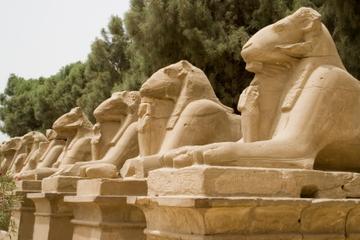 Avenue of Sphinxes
Avenue of Sphinxes The Avenue of Sphinxes was the site of ceremonial processions and originally connected the temples of Luxor and Karnak, although it is considerably more recent than either of those sites, dating to around 380 BC. It stretched some 1.5 miles (2.7 kilometers) and would once have h
Avenue of Sphinxes
Avenue of Sphinxes The Avenue of Sphinxes was the site of ceremonial processions and originally connected the temples of Luxor and Karnak, although it is considerably more recent than either of those sites, dating to around 380 BC. It stretched some 1.5 miles (2.7 kilometers) and would once have h
-
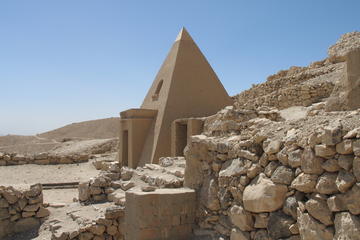 Tombs of the Nobles (Valley of the Nobles)
Tombs of the Nobles (Valley of the Nobles) The Tombs of the Nobles (or Valley of the Nobles) may lack the star power of the Valley of the Kings or other Luxor hotspots, but this neglected gem is well worth a visit. This is a cemetery on a rare scale, with hundreds of tombs embedded in the rock, of
Tombs of the Nobles (Valley of the Nobles)
Tombs of the Nobles (Valley of the Nobles) The Tombs of the Nobles (or Valley of the Nobles) may lack the star power of the Valley of the Kings or other Luxor hotspots, but this neglected gem is well worth a visit. This is a cemetery on a rare scale, with hundreds of tombs embedded in the rock, of
-
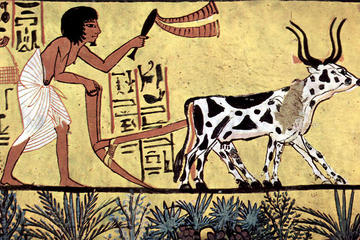 Valley of the Artisans (Deir el-Medina)
Valley of the Artisans (Deir el-Medina) Creating the Valley of the Kings was no simple undertaking: a small army of builders, engineers, engravers and other workers was required to carve the dozens of tombs out of sheer rock over the centuries. Naturally they all had to be housed somewhere, ideall
Valley of the Artisans (Deir el-Medina)
Valley of the Artisans (Deir el-Medina) Creating the Valley of the Kings was no simple undertaking: a small army of builders, engineers, engravers and other workers was required to carve the dozens of tombs out of sheer rock over the centuries. Naturally they all had to be housed somewhere, ideall
-
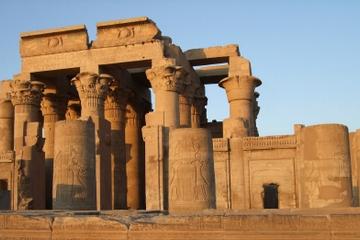 Temple of Kom Ombo
Temple of Kom Ombo Dating from 180BC, this is an unusual temple because it is duplicated, mirroring itself on either side of a central axis. This is because it was dedicated to two gods: Sobek, god of fertility and creator of the world along with Hathor and Khonsu, and also Horus, and each needed
Temple of Kom Ombo
Temple of Kom Ombo Dating from 180BC, this is an unusual temple because it is duplicated, mirroring itself on either side of a central axis. This is because it was dedicated to two gods: Sobek, god of fertility and creator of the world along with Hathor and Khonsu, and also Horus, and each needed
-
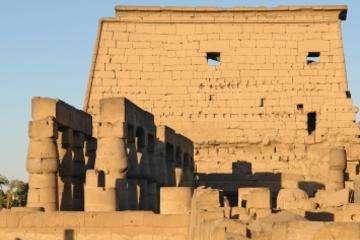 Luxor Temple
Luxor Temple The enormous Luxor Temple was one of the great constructions of the New Kingdom (dating from the 14th century BC) dedicated to the god Amun. It was known as the “Southern Sanctuary” and was the site of ceremonies aimed at encouraging the life-giving Nile floods. Once through the proce
Luxor Temple
Luxor Temple The enormous Luxor Temple was one of the great constructions of the New Kingdom (dating from the 14th century BC) dedicated to the god Amun. It was known as the “Southern Sanctuary” and was the site of ceremonies aimed at encouraging the life-giving Nile floods. Once through the proce
-
 Khan al-Khalili
Khan al-Khalili Jaundiced travelers often dismiss the Khan al-Khalili as a tourist trap; theres no ignoring the fact that its a favored stop of tour buses and has all the associated annoyances (touts and tat) that come with them. But its worth remembering that Cairenes have plied their trades here
Khan al-Khalili
Khan al-Khalili Jaundiced travelers often dismiss the Khan al-Khalili as a tourist trap; theres no ignoring the fact that its a favored stop of tour buses and has all the associated annoyances (touts and tat) that come with them. But its worth remembering that Cairenes have plied their trades here
-
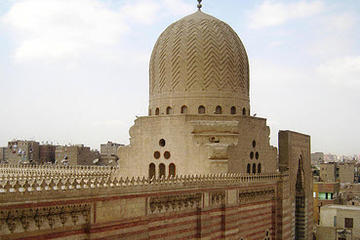 El Muayyad Mosque
El Muayyad Mosque The red-and-white-striped Mosque of al-Muayyad (the Red Mosque), built on the site where its patron Mamluk Sultan al-Muayyad had earlier been imprisoned, displays a particularly grand entrance portal, dripping with stalactite vaulting; the interior is equally lavish. The mosque w
El Muayyad Mosque
El Muayyad Mosque The red-and-white-striped Mosque of al-Muayyad (the Red Mosque), built on the site where its patron Mamluk Sultan al-Muayyad had earlier been imprisoned, displays a particularly grand entrance portal, dripping with stalactite vaulting; the interior is equally lavish. The mosque w
-
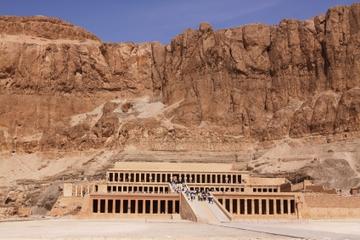 Temple of Hatshepsut (Deir el-Bahari)
Temple of Hatshepsut (Deir el-Bahari) The vast Temple of Hatshepsut in Deir el-Bahari rivals the Pyramids as one of the great funerary monuments of the ancient world. Built into the towering cliff face which shelter the Valley of the Kings on the other side, it rises on three enormous terraces con
Temple of Hatshepsut (Deir el-Bahari)
Temple of Hatshepsut (Deir el-Bahari) The vast Temple of Hatshepsut in Deir el-Bahari rivals the Pyramids as one of the great funerary monuments of the ancient world. Built into the towering cliff face which shelter the Valley of the Kings on the other side, it rises on three enormous terraces con
-
 Djosers Pyramid
Djosers Pyramid Djoser was a king in the 3rd Dynasty of Ancient Egypt, ruling from 2667 BC - 2648 BC. He was the first to build a pyramid for his tomb. It was a development from the low, flat-roofed mastabas and was a series of steps - hence the name Step Pyramid now known as Djosers Pyramid. It f
Djosers Pyramid
Djosers Pyramid Djoser was a king in the 3rd Dynasty of Ancient Egypt, ruling from 2667 BC - 2648 BC. He was the first to build a pyramid for his tomb. It was a development from the low, flat-roofed mastabas and was a series of steps - hence the name Step Pyramid now known as Djosers Pyramid. It f
-
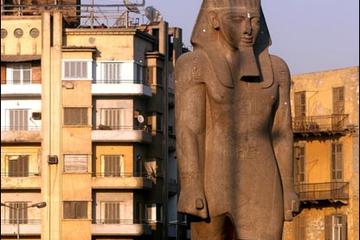 Ramses II Statue
Ramses II Statue Ramses II was a the longest serving pharaoh in Ancient Egypt, reigning from 1279 BC to 1213 BC, a total of 66 years and 2 months. This made him a very powerful and significant man in history and its not surprising he left behind so many huge statues of himself. One of these is the
Ramses II Statue
Ramses II Statue Ramses II was a the longest serving pharaoh in Ancient Egypt, reigning from 1279 BC to 1213 BC, a total of 66 years and 2 months. This made him a very powerful and significant man in history and its not surprising he left behind so many huge statues of himself. One of these is the
-
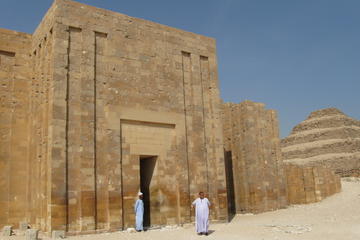 Saqqara (Sakkara)
Saqqara (Sakkara) Saqqara (or Sakkara) lies about 18 miles (30 km) south of Cairo and was the burial site for the ancient Egyptian capital Memphis, now in ruins. In the site of 4.4 by 0.9 miles (7 by 1.5 km) there is a sphinx, smaller than that at Giza at only 26ft by 13ft (8m by 4m), and several
Saqqara (Sakkara)
Saqqara (Sakkara) Saqqara (or Sakkara) lies about 18 miles (30 km) south of Cairo and was the burial site for the ancient Egyptian capital Memphis, now in ruins. In the site of 4.4 by 0.9 miles (7 by 1.5 km) there is a sphinx, smaller than that at Giza at only 26ft by 13ft (8m by 4m), and several
-
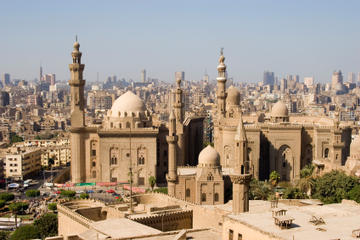 Old Cairo
Old Cairo Old Cairo is a relatively small area but it is rich with history. Also known as Coptic Cairo, Fustat (in reference to the first Muslim city established there), and Masr al-Qadima to the locals, it has been inhabited since the 6th century BC. It has been a Roman fort protecting trade rout
Old Cairo
Old Cairo Old Cairo is a relatively small area but it is rich with history. Also known as Coptic Cairo, Fustat (in reference to the first Muslim city established there), and Masr al-Qadima to the locals, it has been inhabited since the 6th century BC. It has been a Roman fort protecting trade rout
-
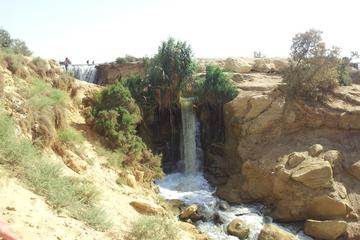 El Fayoum
El Fayoum El Fayoum is a city in Middle Egypt situated 100 kilometers southwest of Cairo. El Fayoum is Egypts largest oasis, measuring in at around 60 kilometers long and 70 kilometers wide. Founded in around 4000 BC, it’s the oldest city in the country and is home to a number of important archaeo
El Fayoum
El Fayoum El Fayoum is a city in Middle Egypt situated 100 kilometers southwest of Cairo. El Fayoum is Egypts largest oasis, measuring in at around 60 kilometers long and 70 kilometers wide. Founded in around 4000 BC, it’s the oldest city in the country and is home to a number of important archaeo
-
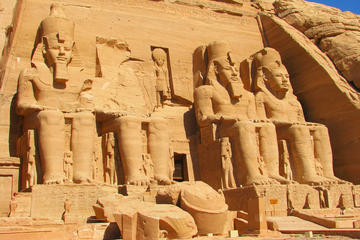 Abu Simbel Temples
Abu Simbel Temples Often referred to as the Temples of Ramses II, these two enormous sandstone structures built in 1255 BC at Abu Simbel in southern Egypt are only half of UNESCO’s Nubian Monuments site. Along with the other monument, the Sanctuary of Isis at Philae, these ancient structures were
Abu Simbel Temples
Abu Simbel Temples Often referred to as the Temples of Ramses II, these two enormous sandstone structures built in 1255 BC at Abu Simbel in southern Egypt are only half of UNESCO’s Nubian Monuments site. Along with the other monument, the Sanctuary of Isis at Philae, these ancient structures were
-
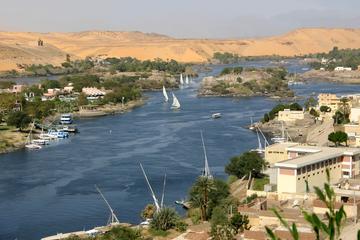 Nile River
Nile River Measuring 4,150 miles (6,680 kilometers) from end to end, the Nile River is the world’s longest and arguably the most important in the region. Egypt’s some 83 million residents, living along the edge of the pitiless Sahara Desert, have always relied on the waters of the Nile for basic s
Nile River
Nile River Measuring 4,150 miles (6,680 kilometers) from end to end, the Nile River is the world’s longest and arguably the most important in the region. Egypt’s some 83 million residents, living along the edge of the pitiless Sahara Desert, have always relied on the waters of the Nile for basic s
-
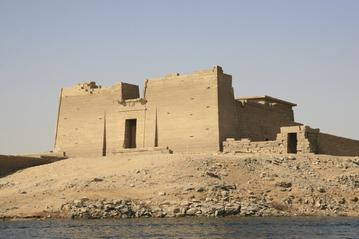 Temple of Kalabsha
Temple of Kalabsha Built as a tribute to the Lower Nubian sun god, Mandulis, Temple of Kalabsha is one of Egypt’s numerous ancient and historic structures and a prime destination for travelers looking to step back into the country’s incredible past. Built during the rule of Augustus around 30 BC,
Temple of Kalabsha
Temple of Kalabsha Built as a tribute to the Lower Nubian sun god, Mandulis, Temple of Kalabsha is one of Egypt’s numerous ancient and historic structures and a prime destination for travelers looking to step back into the country’s incredible past. Built during the rule of Augustus around 30 BC,
-
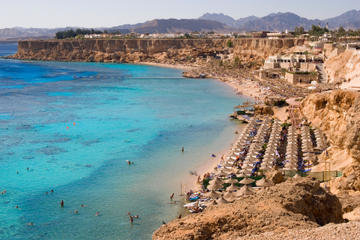 Sharm el Sheikh Cruise Port
Sharm el Sheikh Cruise Port Sharm el Sheikh lies on the tip of Egypt’s Sinai Peninsula, where the Gulfs of Aqaba and Suez meet the Red Sea. Rapidly growing in popularity with tourists, it is one of the most extraordinary diving destinations in the world. In addition to cruise ships, the port welco
Sharm el Sheikh Cruise Port
Sharm el Sheikh Cruise Port Sharm el Sheikh lies on the tip of Egypt’s Sinai Peninsula, where the Gulfs of Aqaba and Suez meet the Red Sea. Rapidly growing in popularity with tourists, it is one of the most extraordinary diving destinations in the world. In addition to cruise ships, the port welco
-
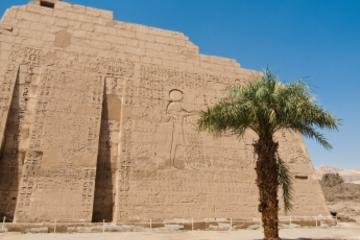 Medinet Habu (Temple of Ramses III)
Medinet Habu (Temple of Ramses III) Where the fertile Nile floodplain meets the desert lies the Mortuary Temple of Ramses III, known locally by its Arabic name Medinet Habu. The whole compound forms a huge rectangle, with the temple a smaller rectangle within. The ensemble is the second largest in
Medinet Habu (Temple of Ramses III)
Medinet Habu (Temple of Ramses III) Where the fertile Nile floodplain meets the desert lies the Mortuary Temple of Ramses III, known locally by its Arabic name Medinet Habu. The whole compound forms a huge rectangle, with the temple a smaller rectangle within. The ensemble is the second largest in
-
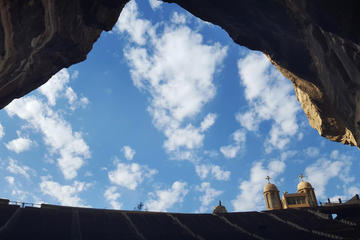 El Mokattam Mountain Cave Church (Monastery of St Simon)
El Mokattam Mountain Cave Church (Monastery of St Simon) El Mokattam Mountain Cave Church, also known as the Monastery of St Simon, is located in the Mokattam mountain in southeast Cairo. The area is known as ‘garbage city’ due to the large number of garbage collectors or ‘Zabbaleen’ that liv
El Mokattam Mountain Cave Church (Monastery of St Simon)
El Mokattam Mountain Cave Church (Monastery of St Simon) El Mokattam Mountain Cave Church, also known as the Monastery of St Simon, is located in the Mokattam mountain in southeast Cairo. The area is known as ‘garbage city’ due to the large number of garbage collectors or ‘Zabbaleen’ that liv
-
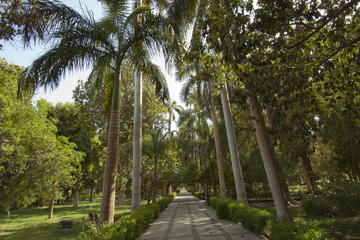 Aswan Botanic Garden
Aswan Botanic Garden Designed by Lord Kitchener, the 16-acre Aswan Botanic Gardens is home to trees, flowers and plants from India, Africa and even the world beyond. Travelers can relax in the wide-open spaces of this garden’s breathtaking natural beauty or wind through the extensive exhibit hall
Aswan Botanic Garden
Aswan Botanic Garden Designed by Lord Kitchener, the 16-acre Aswan Botanic Gardens is home to trees, flowers and plants from India, Africa and even the world beyond. Travelers can relax in the wide-open spaces of this garden’s breathtaking natural beauty or wind through the extensive exhibit hall
Total
120 -travel
FirstPage PreviousPage NextPage LastPage CurrentPage:
4/6 20-travel/Page Goto:
 Avenue of Sphinxes
Avenue of Sphinxes The Avenue of Sphinxes was the site of ceremonial processions and originally connected the temples of Luxor and Karnak, although it is considerably more recent than either of those sites, dating to around 380 BC. It stretched some 1.5 miles (2.7 kilometers) and would once have h
Avenue of Sphinxes
Avenue of Sphinxes The Avenue of Sphinxes was the site of ceremonial processions and originally connected the temples of Luxor and Karnak, although it is considerably more recent than either of those sites, dating to around 380 BC. It stretched some 1.5 miles (2.7 kilometers) and would once have h
 Tombs of the Nobles (Valley of the Nobles)
Tombs of the Nobles (Valley of the Nobles) The Tombs of the Nobles (or Valley of the Nobles) may lack the star power of the Valley of the Kings or other Luxor hotspots, but this neglected gem is well worth a visit. This is a cemetery on a rare scale, with hundreds of tombs embedded in the rock, of
Tombs of the Nobles (Valley of the Nobles)
Tombs of the Nobles (Valley of the Nobles) The Tombs of the Nobles (or Valley of the Nobles) may lack the star power of the Valley of the Kings or other Luxor hotspots, but this neglected gem is well worth a visit. This is a cemetery on a rare scale, with hundreds of tombs embedded in the rock, of
 Valley of the Artisans (Deir el-Medina)
Valley of the Artisans (Deir el-Medina) Creating the Valley of the Kings was no simple undertaking: a small army of builders, engineers, engravers and other workers was required to carve the dozens of tombs out of sheer rock over the centuries. Naturally they all had to be housed somewhere, ideall
Valley of the Artisans (Deir el-Medina)
Valley of the Artisans (Deir el-Medina) Creating the Valley of the Kings was no simple undertaking: a small army of builders, engineers, engravers and other workers was required to carve the dozens of tombs out of sheer rock over the centuries. Naturally they all had to be housed somewhere, ideall
 Temple of Kom Ombo
Temple of Kom Ombo Dating from 180BC, this is an unusual temple because it is duplicated, mirroring itself on either side of a central axis. This is because it was dedicated to two gods: Sobek, god of fertility and creator of the world along with Hathor and Khonsu, and also Horus, and each needed
Temple of Kom Ombo
Temple of Kom Ombo Dating from 180BC, this is an unusual temple because it is duplicated, mirroring itself on either side of a central axis. This is because it was dedicated to two gods: Sobek, god of fertility and creator of the world along with Hathor and Khonsu, and also Horus, and each needed
 Luxor Temple
Luxor Temple The enormous Luxor Temple was one of the great constructions of the New Kingdom (dating from the 14th century BC) dedicated to the god Amun. It was known as the “Southern Sanctuary” and was the site of ceremonies aimed at encouraging the life-giving Nile floods. Once through the proce
Luxor Temple
Luxor Temple The enormous Luxor Temple was one of the great constructions of the New Kingdom (dating from the 14th century BC) dedicated to the god Amun. It was known as the “Southern Sanctuary” and was the site of ceremonies aimed at encouraging the life-giving Nile floods. Once through the proce
 Khan al-Khalili
Khan al-Khalili Jaundiced travelers often dismiss the Khan al-Khalili as a tourist trap; theres no ignoring the fact that its a favored stop of tour buses and has all the associated annoyances (touts and tat) that come with them. But its worth remembering that Cairenes have plied their trades here
Khan al-Khalili
Khan al-Khalili Jaundiced travelers often dismiss the Khan al-Khalili as a tourist trap; theres no ignoring the fact that its a favored stop of tour buses and has all the associated annoyances (touts and tat) that come with them. But its worth remembering that Cairenes have plied their trades here
 El Muayyad Mosque
El Muayyad Mosque The red-and-white-striped Mosque of al-Muayyad (the Red Mosque), built on the site where its patron Mamluk Sultan al-Muayyad had earlier been imprisoned, displays a particularly grand entrance portal, dripping with stalactite vaulting; the interior is equally lavish. The mosque w
El Muayyad Mosque
El Muayyad Mosque The red-and-white-striped Mosque of al-Muayyad (the Red Mosque), built on the site where its patron Mamluk Sultan al-Muayyad had earlier been imprisoned, displays a particularly grand entrance portal, dripping with stalactite vaulting; the interior is equally lavish. The mosque w
 Temple of Hatshepsut (Deir el-Bahari)
Temple of Hatshepsut (Deir el-Bahari) The vast Temple of Hatshepsut in Deir el-Bahari rivals the Pyramids as one of the great funerary monuments of the ancient world. Built into the towering cliff face which shelter the Valley of the Kings on the other side, it rises on three enormous terraces con
Temple of Hatshepsut (Deir el-Bahari)
Temple of Hatshepsut (Deir el-Bahari) The vast Temple of Hatshepsut in Deir el-Bahari rivals the Pyramids as one of the great funerary monuments of the ancient world. Built into the towering cliff face which shelter the Valley of the Kings on the other side, it rises on three enormous terraces con
 Djosers Pyramid
Djosers Pyramid Djoser was a king in the 3rd Dynasty of Ancient Egypt, ruling from 2667 BC - 2648 BC. He was the first to build a pyramid for his tomb. It was a development from the low, flat-roofed mastabas and was a series of steps - hence the name Step Pyramid now known as Djosers Pyramid. It f
Djosers Pyramid
Djosers Pyramid Djoser was a king in the 3rd Dynasty of Ancient Egypt, ruling from 2667 BC - 2648 BC. He was the first to build a pyramid for his tomb. It was a development from the low, flat-roofed mastabas and was a series of steps - hence the name Step Pyramid now known as Djosers Pyramid. It f
 Ramses II Statue
Ramses II Statue Ramses II was a the longest serving pharaoh in Ancient Egypt, reigning from 1279 BC to 1213 BC, a total of 66 years and 2 months. This made him a very powerful and significant man in history and its not surprising he left behind so many huge statues of himself. One of these is the
Ramses II Statue
Ramses II Statue Ramses II was a the longest serving pharaoh in Ancient Egypt, reigning from 1279 BC to 1213 BC, a total of 66 years and 2 months. This made him a very powerful and significant man in history and its not surprising he left behind so many huge statues of himself. One of these is the
 Saqqara (Sakkara)
Saqqara (Sakkara) Saqqara (or Sakkara) lies about 18 miles (30 km) south of Cairo and was the burial site for the ancient Egyptian capital Memphis, now in ruins. In the site of 4.4 by 0.9 miles (7 by 1.5 km) there is a sphinx, smaller than that at Giza at only 26ft by 13ft (8m by 4m), and several
Saqqara (Sakkara)
Saqqara (Sakkara) Saqqara (or Sakkara) lies about 18 miles (30 km) south of Cairo and was the burial site for the ancient Egyptian capital Memphis, now in ruins. In the site of 4.4 by 0.9 miles (7 by 1.5 km) there is a sphinx, smaller than that at Giza at only 26ft by 13ft (8m by 4m), and several
 Old Cairo
Old Cairo Old Cairo is a relatively small area but it is rich with history. Also known as Coptic Cairo, Fustat (in reference to the first Muslim city established there), and Masr al-Qadima to the locals, it has been inhabited since the 6th century BC. It has been a Roman fort protecting trade rout
Old Cairo
Old Cairo Old Cairo is a relatively small area but it is rich with history. Also known as Coptic Cairo, Fustat (in reference to the first Muslim city established there), and Masr al-Qadima to the locals, it has been inhabited since the 6th century BC. It has been a Roman fort protecting trade rout
 El Fayoum
El Fayoum El Fayoum is a city in Middle Egypt situated 100 kilometers southwest of Cairo. El Fayoum is Egypts largest oasis, measuring in at around 60 kilometers long and 70 kilometers wide. Founded in around 4000 BC, it’s the oldest city in the country and is home to a number of important archaeo
El Fayoum
El Fayoum El Fayoum is a city in Middle Egypt situated 100 kilometers southwest of Cairo. El Fayoum is Egypts largest oasis, measuring in at around 60 kilometers long and 70 kilometers wide. Founded in around 4000 BC, it’s the oldest city in the country and is home to a number of important archaeo
 Abu Simbel Temples
Abu Simbel Temples Often referred to as the Temples of Ramses II, these two enormous sandstone structures built in 1255 BC at Abu Simbel in southern Egypt are only half of UNESCO’s Nubian Monuments site. Along with the other monument, the Sanctuary of Isis at Philae, these ancient structures were
Abu Simbel Temples
Abu Simbel Temples Often referred to as the Temples of Ramses II, these two enormous sandstone structures built in 1255 BC at Abu Simbel in southern Egypt are only half of UNESCO’s Nubian Monuments site. Along with the other monument, the Sanctuary of Isis at Philae, these ancient structures were
 Nile River
Nile River Measuring 4,150 miles (6,680 kilometers) from end to end, the Nile River is the world’s longest and arguably the most important in the region. Egypt’s some 83 million residents, living along the edge of the pitiless Sahara Desert, have always relied on the waters of the Nile for basic s
Nile River
Nile River Measuring 4,150 miles (6,680 kilometers) from end to end, the Nile River is the world’s longest and arguably the most important in the region. Egypt’s some 83 million residents, living along the edge of the pitiless Sahara Desert, have always relied on the waters of the Nile for basic s
 Temple of Kalabsha
Temple of Kalabsha Built as a tribute to the Lower Nubian sun god, Mandulis, Temple of Kalabsha is one of Egypt’s numerous ancient and historic structures and a prime destination for travelers looking to step back into the country’s incredible past. Built during the rule of Augustus around 30 BC,
Temple of Kalabsha
Temple of Kalabsha Built as a tribute to the Lower Nubian sun god, Mandulis, Temple of Kalabsha is one of Egypt’s numerous ancient and historic structures and a prime destination for travelers looking to step back into the country’s incredible past. Built during the rule of Augustus around 30 BC,
 Sharm el Sheikh Cruise Port
Sharm el Sheikh Cruise Port Sharm el Sheikh lies on the tip of Egypt’s Sinai Peninsula, where the Gulfs of Aqaba and Suez meet the Red Sea. Rapidly growing in popularity with tourists, it is one of the most extraordinary diving destinations in the world. In addition to cruise ships, the port welco
Sharm el Sheikh Cruise Port
Sharm el Sheikh Cruise Port Sharm el Sheikh lies on the tip of Egypt’s Sinai Peninsula, where the Gulfs of Aqaba and Suez meet the Red Sea. Rapidly growing in popularity with tourists, it is one of the most extraordinary diving destinations in the world. In addition to cruise ships, the port welco
 Medinet Habu (Temple of Ramses III)
Medinet Habu (Temple of Ramses III) Where the fertile Nile floodplain meets the desert lies the Mortuary Temple of Ramses III, known locally by its Arabic name Medinet Habu. The whole compound forms a huge rectangle, with the temple a smaller rectangle within. The ensemble is the second largest in
Medinet Habu (Temple of Ramses III)
Medinet Habu (Temple of Ramses III) Where the fertile Nile floodplain meets the desert lies the Mortuary Temple of Ramses III, known locally by its Arabic name Medinet Habu. The whole compound forms a huge rectangle, with the temple a smaller rectangle within. The ensemble is the second largest in
 El Mokattam Mountain Cave Church (Monastery of St Simon)
El Mokattam Mountain Cave Church (Monastery of St Simon) El Mokattam Mountain Cave Church, also known as the Monastery of St Simon, is located in the Mokattam mountain in southeast Cairo. The area is known as ‘garbage city’ due to the large number of garbage collectors or ‘Zabbaleen’ that liv
El Mokattam Mountain Cave Church (Monastery of St Simon)
El Mokattam Mountain Cave Church (Monastery of St Simon) El Mokattam Mountain Cave Church, also known as the Monastery of St Simon, is located in the Mokattam mountain in southeast Cairo. The area is known as ‘garbage city’ due to the large number of garbage collectors or ‘Zabbaleen’ that liv
 Aswan Botanic Garden
Aswan Botanic Garden Designed by Lord Kitchener, the 16-acre Aswan Botanic Gardens is home to trees, flowers and plants from India, Africa and even the world beyond. Travelers can relax in the wide-open spaces of this garden’s breathtaking natural beauty or wind through the extensive exhibit hall
Aswan Botanic Garden
Aswan Botanic Garden Designed by Lord Kitchener, the 16-acre Aswan Botanic Gardens is home to trees, flowers and plants from India, Africa and even the world beyond. Travelers can relax in the wide-open spaces of this garden’s breathtaking natural beauty or wind through the extensive exhibit hall